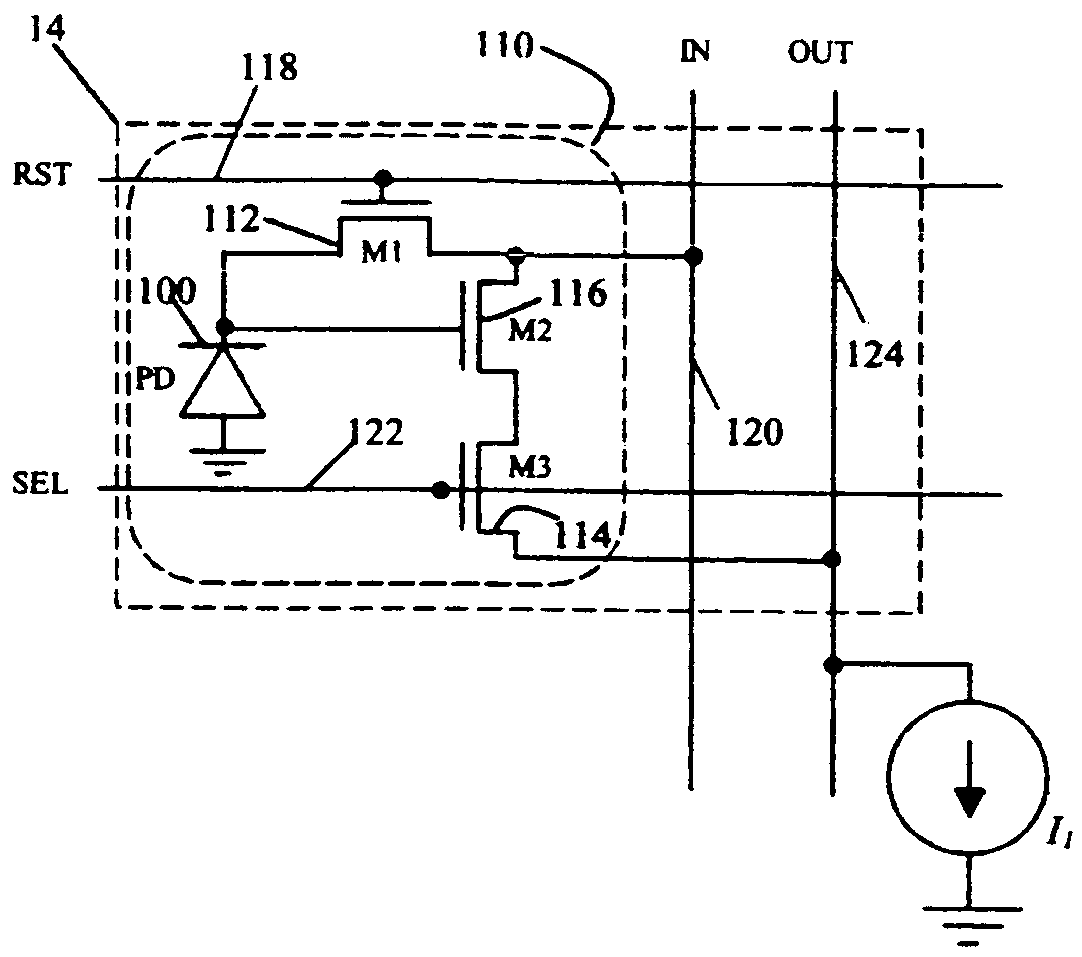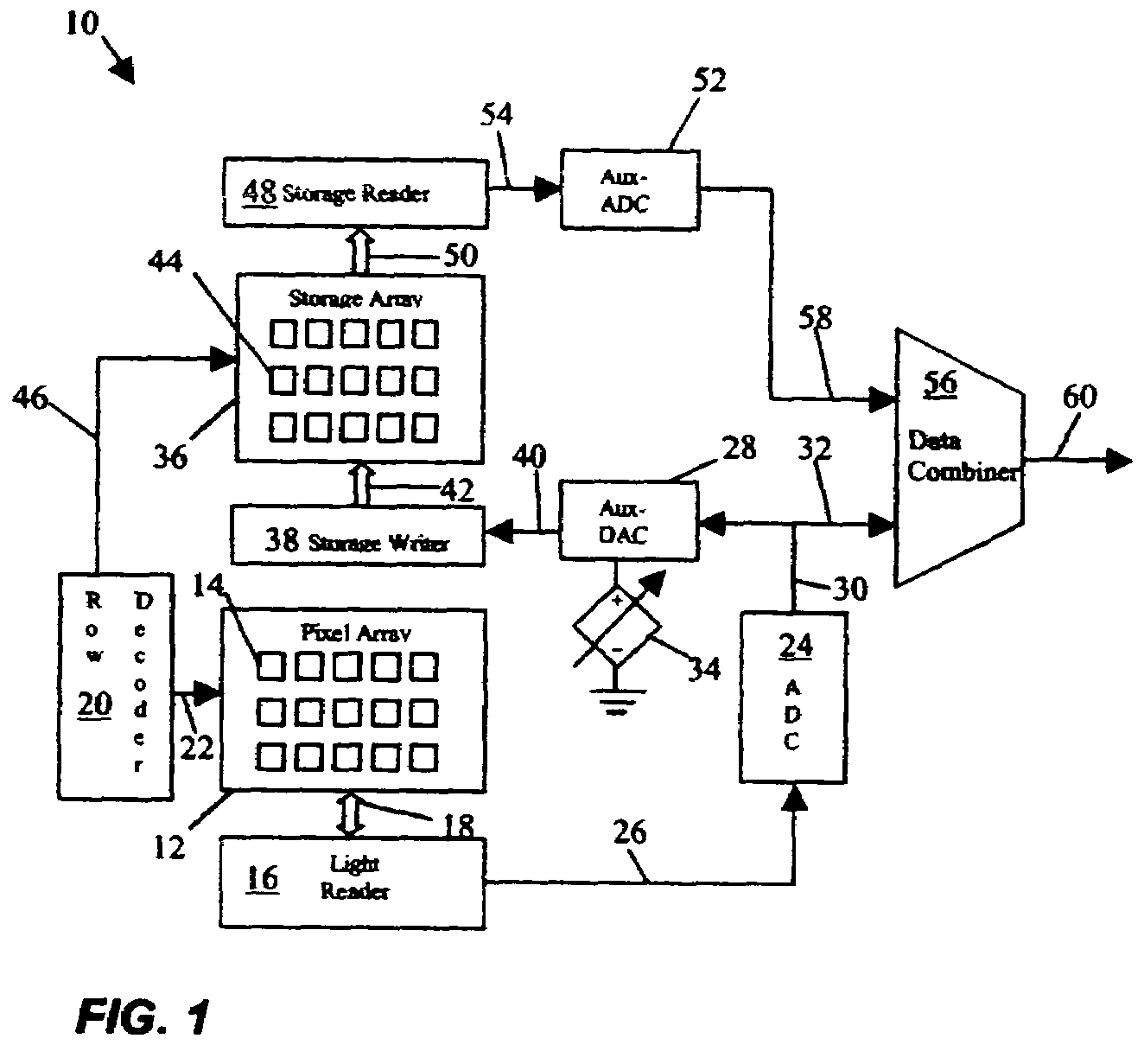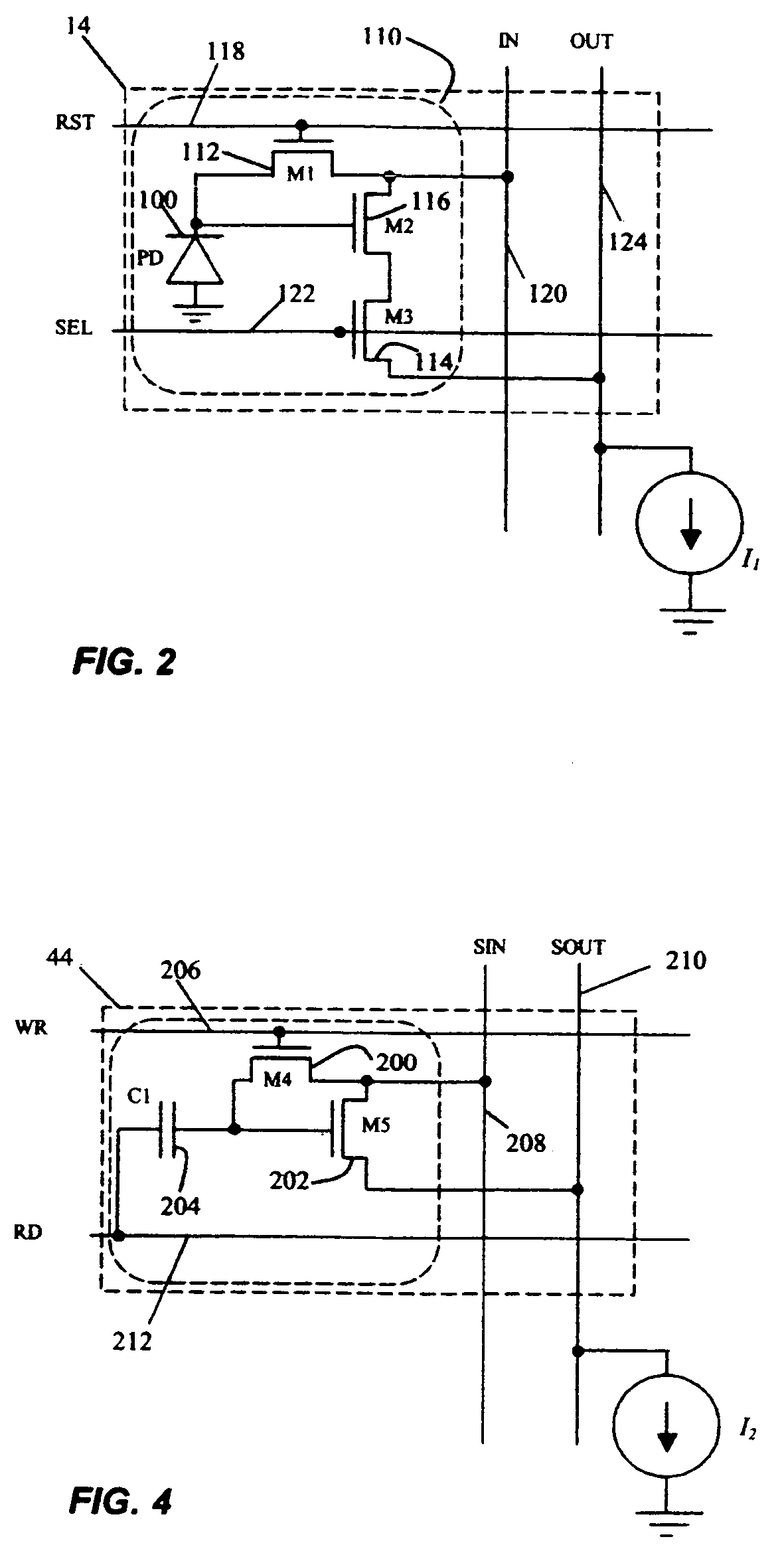CMOS image sensor with noise cancellation
a cmos image sensor and noise cancellation technology, applied in the field of semiconductor image sensors, can solve the problems of inability to develop a cmos sensor with the same snr and pixel pitch requirements, inability to meet the requirements of pixel pitch, and relatively inefficient approach, and achieve the effect of avoiding errors associated with storing and retrieving signals
- Summary
- Abstract
- Description
- Claims
- Application Information
AI Technical Summary
Problems solved by technology
Method used
Image
Examples
Embodiment Construction
[0029]Disclosed is an image sensor that has one or more pixels within a pixel array. The pixel array may be coupled to a control circuit and one or more subtraction circuits. The control circuit may cause each pixel to provide a first reference output signal and a reset output signal. The control circuit may then cause each pixel to provide a light response output signal and a second reference output signal. The light response output signal corresponds to the image that is to be captured by the sensor.
[0030]The subtraction circuit may provide a difference between the reset output signal and the first reference output signal to create a noise signal that is stored in memory. The subtraction circuit may also provide a difference between the light response output signal and the second reference output signal to create a normalized light response output signal. The noise signal may then be subtracted from the normalized light response output signal to generate the output data of the sen...
PUM
 Login to View More
Login to View More Abstract
Description
Claims
Application Information
 Login to View More
Login to View More - R&D
- Intellectual Property
- Life Sciences
- Materials
- Tech Scout
- Unparalleled Data Quality
- Higher Quality Content
- 60% Fewer Hallucinations
Browse by: Latest US Patents, China's latest patents, Technical Efficacy Thesaurus, Application Domain, Technology Topic, Popular Technical Reports.
© 2025 PatSnap. All rights reserved.Legal|Privacy policy|Modern Slavery Act Transparency Statement|Sitemap|About US| Contact US: help@patsnap.com



